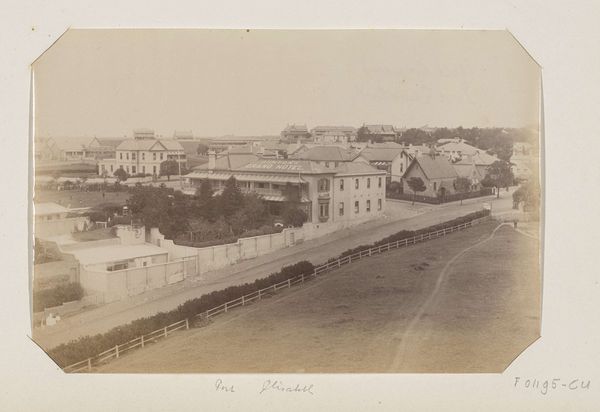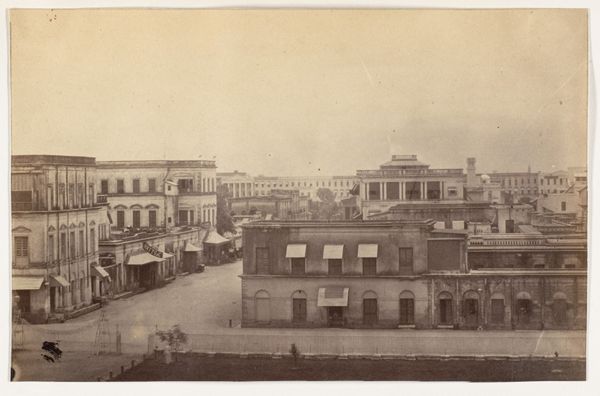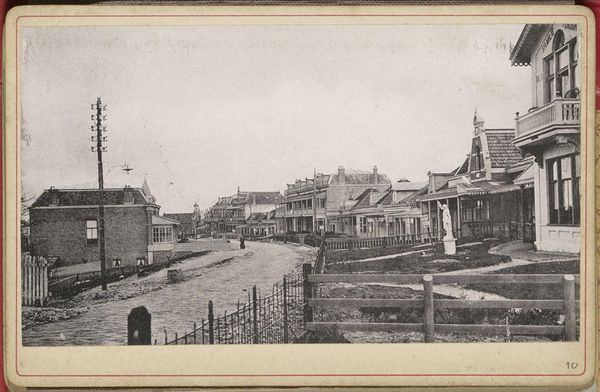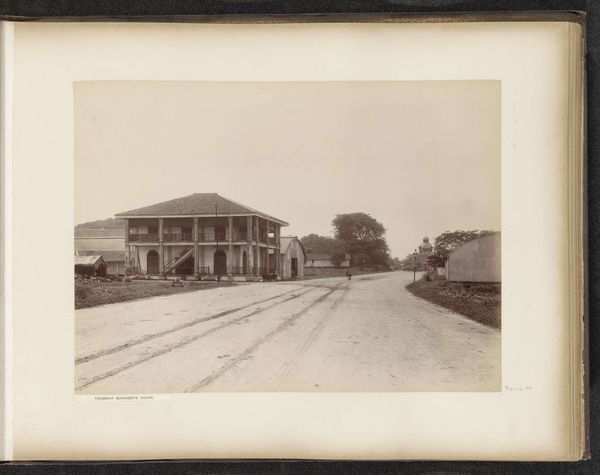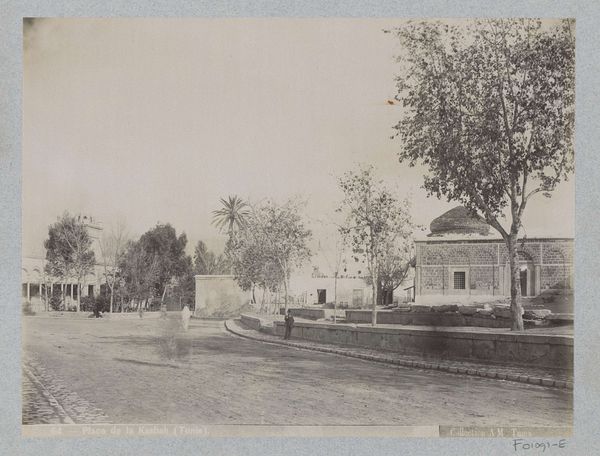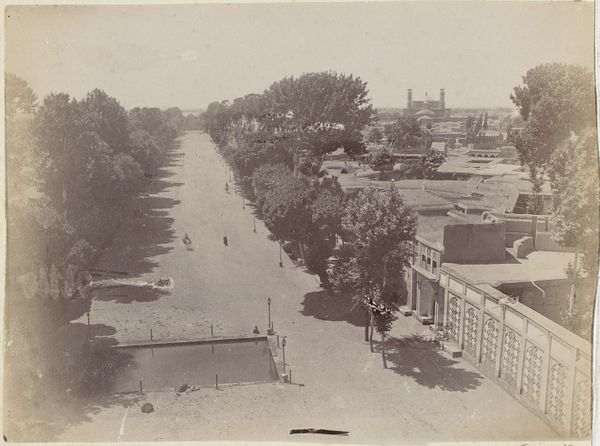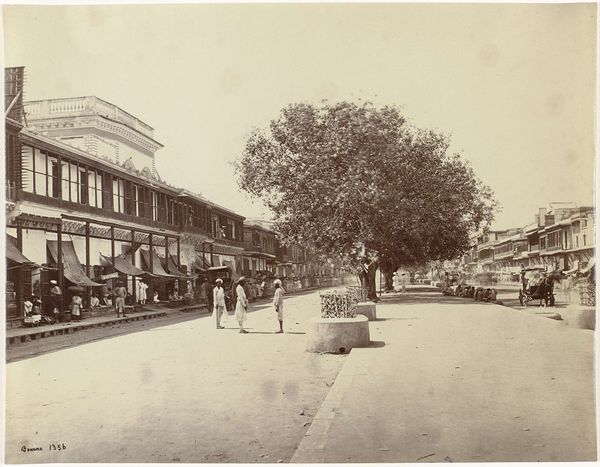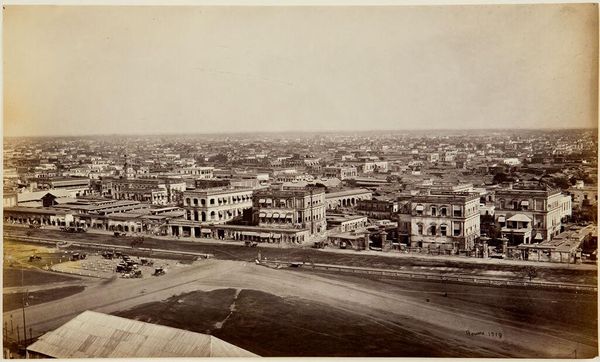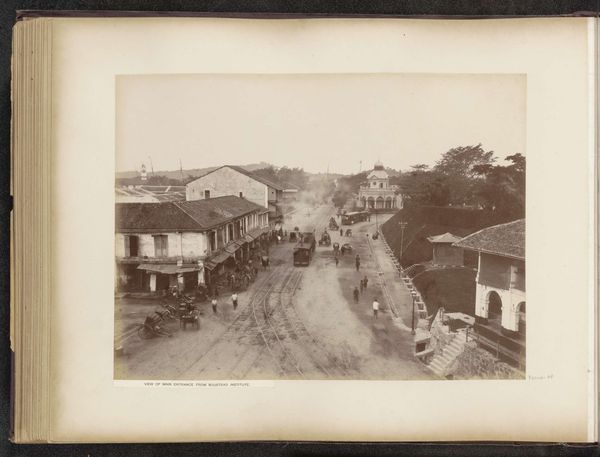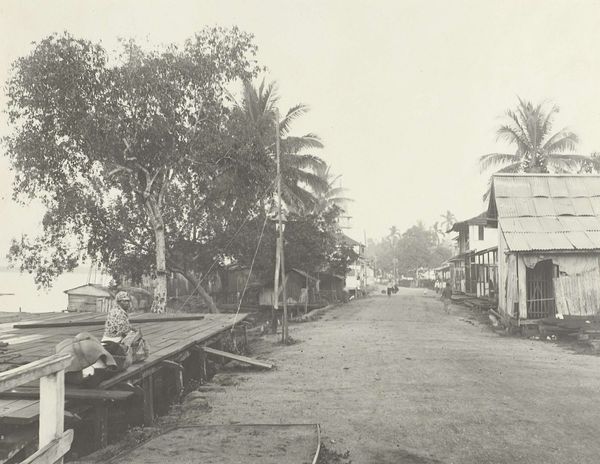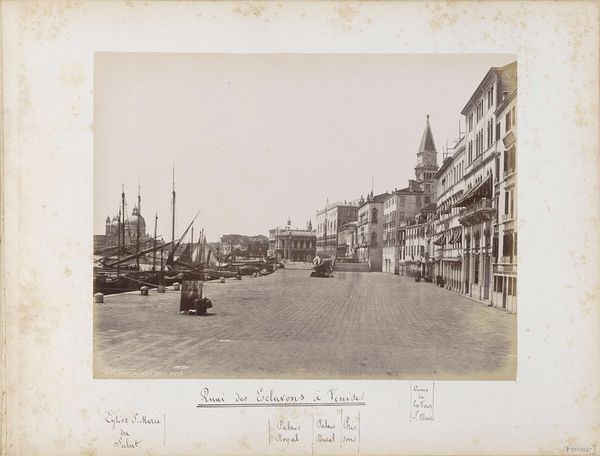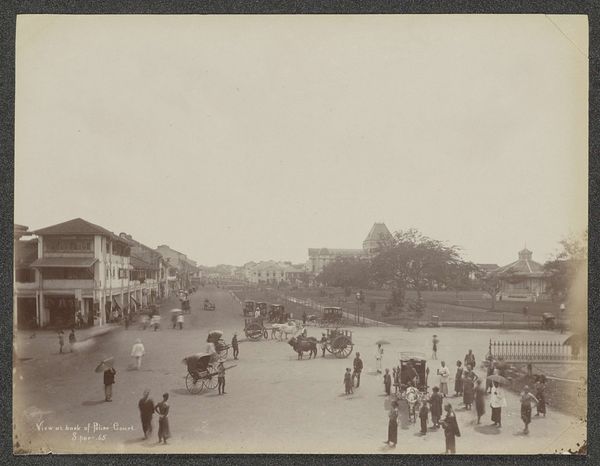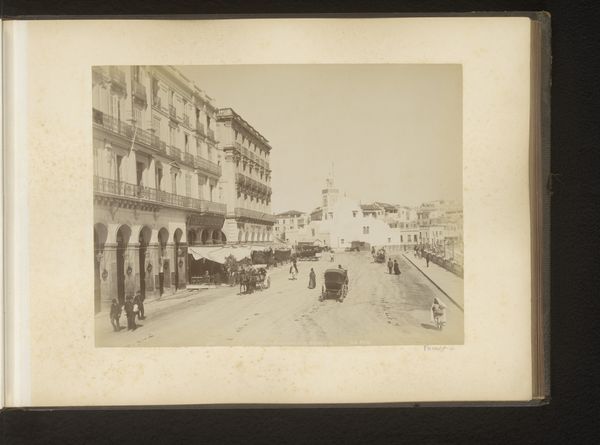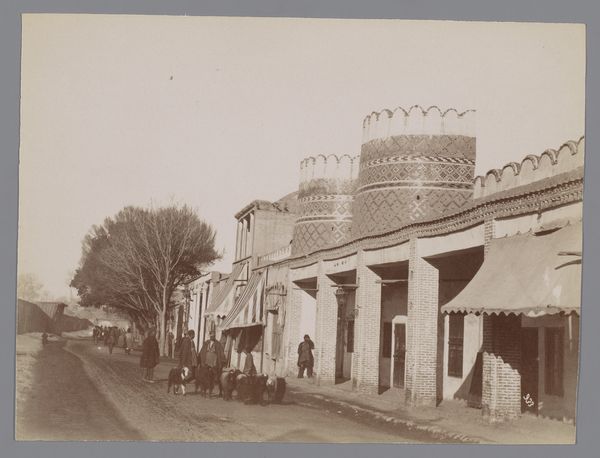
print, photography, albumen-print
#
16_19th-century
# print
#
photography
#
orientalism
#
cityscape
#
albumen-print
Dimensions: height 209 mm, width 268 mm
Copyright: Rijks Museum: Open Domain
Curator: Right, let's delve into this photograph titled "Gezicht op de Strand Road in Rangoon," or "View of Strand Road in Rangoon." We believe it was taken around 1885-1886 by P. Klier. It’s an albumen print, a photographic process popular during that era. Editor: Wow, okay, first impressions? It feels oddly still, doesn't it? Like someone pressed pause on a busy thoroughfare. The sepia tones give it a wistful, almost ghostly quality. All those palm trees, the suggestion of the sea...it's a longing kind of image. Curator: Absolutely. Consider the socio-political context. This photograph exists squarely within the tradition of Orientalism, reflecting European perceptions and constructions of Southeast Asia during the colonial period. Klier was working in a moment of intense transformation for Rangoon under British rule. Editor: Right. I can imagine him, or his client, viewing it as capturing an "exotic" moment in time, ripe for consumption back in Europe. It reminds me of postcards you might pick up to show what places you've been, a symbol of an explorer’s "seen it" checklist. Is this kind of street a hybrid of colonial ambition and the indigenous community who would be affected by those policies? Curator: Precisely. It represents both the imposing infrastructure of empire, seen in the European architectural styles adapted for a tropical climate, and glimpses of Burmese life adjusting within those impositions, from transportation styles to trading practices. Consider what is not there as well as what is visible in terms of class and labor in order to consider how the scene came to be depicted. Editor: That’s an important reminder. So it's like a carefully constructed stage. I'm struck by how ordered everything seems— the buildings, even the trees have lines in order and look almost arranged, which creates that wistful image for me as if it has had its authenticity altered.. Do we know anything more about why Klier was working in Rangoon, or his client network and intention to reflect upon class division? Curator: We know Klier operated commercially, selling images like these to European residents and tourists keen to possess a piece of the "Orient." Therefore we can consider the camera to be both a tool of observation and commodification, which has implications in discussions of postcolonialism in addition to trade relations. Editor: Fascinating. Looking at it now with that lens, it definitely feels less like a neutral street scene and more like a curated narrative. As we look at this "View", that feels more relevant to its creation as well as understanding its historical implications. Curator: I agree. It serves as a reminder that photography is never a neutral act, but rather one deeply embedded in power dynamics. Editor: Exactly. This walk down Strand Road has shifted our perception, illuminating not just the scene, but the critical contexts enmeshed within the frame.
Comments
No comments
Be the first to comment and join the conversation on the ultimate creative platform.
